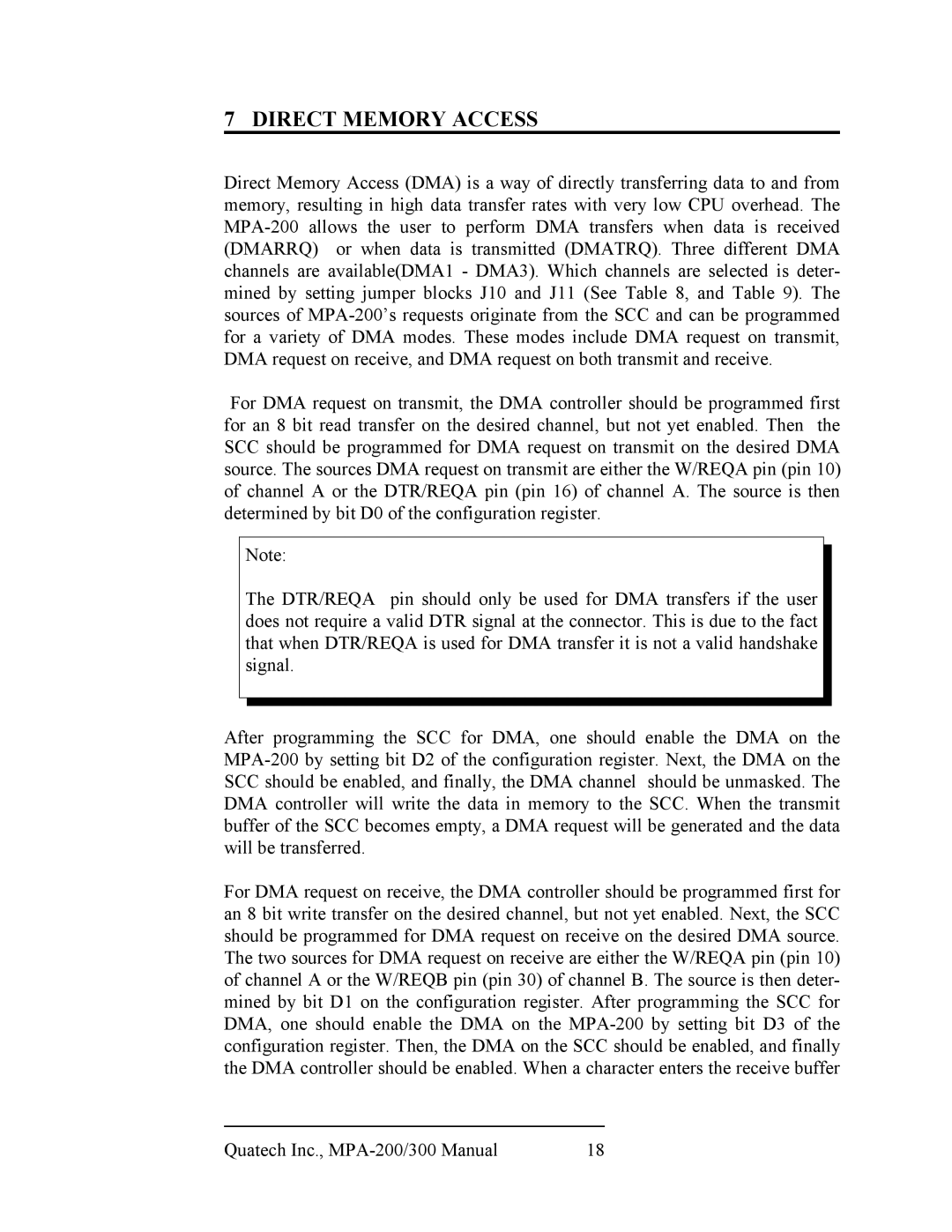
7 DIRECT MEMORY ACCESS
Direct Memory Access (DMA) is a way of directly transferring data to and from memory, resulting in high data transfer rates with very low CPU overhead. The
For DMA request on transmit, the DMA controller should be programmed first for an 8 bit read transfer on the desired channel, but not yet enabled. Then the SCC should be programmed for DMA request on transmit on the desired DMA source. The sources DMA request on transmit are either the W/REQA pin (pin 10) of channel A or the DTR/REQA pin (pin 16) of channel A. The source is then determined by bit D0 of the configuration register.
Note:
The DTR/REQA pin should only be used for DMA transfers if the user does not require a valid DTR signal at the connector. This is due to the fact that when DTR/REQA is used for DMA transfer it is not a valid handshake signal.
After programming the SCC for DMA, one should enable the DMA on the
For DMA request on receive, the DMA controller should be programmed first for an 8 bit write transfer on the desired channel, but not yet enabled. Next, the SCC should be programmed for DMA request on receive on the desired DMA source. The two sources for DMA request on receive are either the W/REQA pin (pin 10) of channel A or the W/REQB pin (pin 30) of channel B. The source is then deter- mined by bit D1 on the configuration register. After programming the SCC for DMA, one should enable the DMA on the
Quatech Inc., | 18 |
